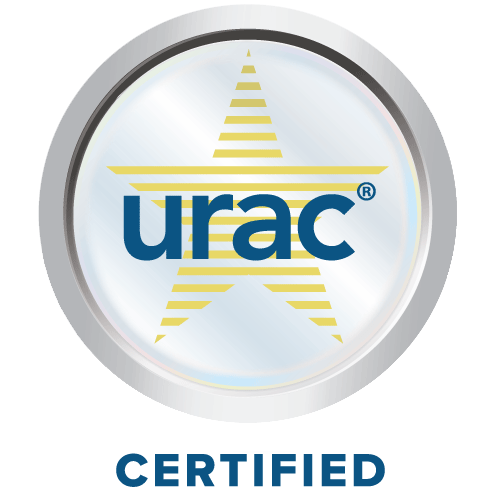Food safety
Food - hygiene and sanitation
Food safety refers to the conditions and practices that preserve the quality of food. These practices prevent contamination and foodborne illnesses.
Function
Food can be contaminated in many different ways. Some food products may already contain bacteria or parasites. These germs can be spread during the packaging process if the food products are not handled properly. Improperly cooking, preparing, or storing food can also cause contamination.
Properly handling, storing, and preparing food greatly reduces the risk for getting foodborne illnesses.

Food Sources
All foods can become contaminated. Higher risk foods include red meats, poultry, eggs, cheese, dairy products, raw sprouts, and raw fish or shellfish.
Side Effects
Poor food safety practices can lead to foodborne illness. Symptoms of foodborne illnesses vary. They usually include stomach problems or stomach upset, including nausea, vomiting, and/or diarrhea. Foodborne illnesses may be severe and fatal. Young children, older adults, pregnant women, and people who have a weakened immune system are especially at risk.
Recommendations
If your hands have any cuts or sores, wear gloves suitable for handling food or avoid preparing food. To reduce your risk for foodborne illness, you should wash your hands thoroughly:
- Before and after handling any food
- After using the toilet or changing diapers
- After touching animals
To avoid cross-contaminating food items you should:
- Wash all cutting boards and utensils with hot water and soap after preparing each food item.
- Separate meat, poultry, and seafood from other foods during preparation.
To reduce chances of food poisoning, you should:
- Cook food to the correct temperature. Check the temperature with an internal thermometer at the thickest point, never on the surface. Poultry, all ground meats, and all stuffed meats should be cooked to an internal temperature of 165°F (74°C). Seafood and steaks or chops or roasts of red meat should be cooked to an internal temperature of 145°F (63°C). Reheat leftovers to an internal temperature of least 165°F (74°C). Cook eggs until the white and yolk are firm. Fish should have an opaque appearance and flake easily.
- Refrigerate or freeze food promptly. Store food at the right temperature as quickly as possible after it is purchased. Buy your groceries at the end of running your errands rather than the beginning. Leftovers should be refrigerated within 2 hours of serving. Move hot foods into wide, flat containers so that they can cool down more quickly. Keep frozen foods in the freezer until they are ready to be thawed and cooked. Thaw foods in the refrigerator or under cool running water (or in the microwave if the food is going to be cooked immediately after thawing); never thaw foods on the counter at room temperature.
- Label leftovers clearly with the date they were prepared and stored.
- Never cut mold off of any food and attempt to eat the parts that look "safe". The mold can extend farther into the food than you can see.
- Food can also be contaminated before it is purchased. Watch for and DO NOT buy or use outdated food, packaged food with a broken seal, or cans that have a bulge or dent. DO NOT use foods that have an unusual odor or appearance, or a spoiled taste.
- Prepare home-canned foods in clean conditions. Be very careful during the canning process. Home-canned foods are the most common cause of botulism, a severe foodborne illness.
References
Ochoa TJ, Chea-Woo E. Approach to patients with gastrointestinal tract infections and food poisoning. In: Cherry JD, Harrison GJ, Kaplan SL, Steinbach WJ, Hotez PJ, eds. Feigin and Cherry's Textbook of Pediatric Infectious Diseases. 8th ed. Philadelphia, PA: Elsevier; 2019:chap 44.
United States Department of Agriculture. Food safety. www.fsis.usda.gov/food-safety. Updated October 21, 2020. Accessed May 7, 2024.
United States Department of Agriculture. Safe food handling and preparation. www.fsis.usda.gov/food-safety/safe-food-handling-and-preparation. Updated February 17, 2021. Accessed May 7, 2024.
United States Department of Health and Human Services. Food safety by type of food. www.foodsafety.gov/keep-food-safe/food-safety-by-type-food. Updated April 1, 2019. Accessed May 7, 2024.
United States Department of Health and Human Services. Food safety in a disaster or emergency. www.foodsafety.gov/keep-food-safe/food-safety-in-disaster-or-emergency. Updated September 20, 2023. Accessed May 7, 2024.
Wong KK, Griffin PM. Foodborne disease. In: Bennett JE, Dolin R, Blaser MJ, eds. Mandell, Douglas, and Bennett's Principles and Practice of Infectious Diseases. 9th ed. Philadelphia, PA: Elsevier; 2020:chap 101.
Review Date: 5/4/2024


